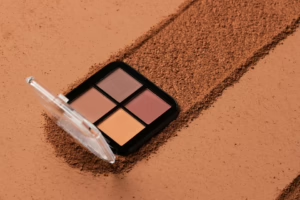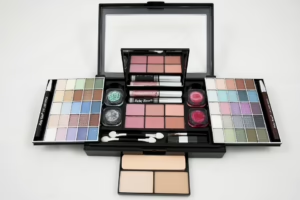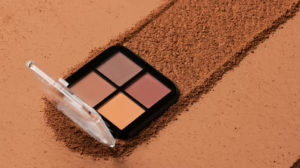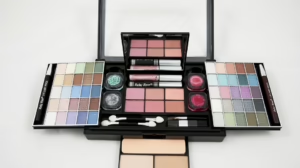Balancing Beauty and Reality: The Controversy of Beauty Scale Metrics
Introduction
In an age where visual representation dominates social media, the concept of beauty has become an intricate tapestry woven from cultural norms, personal biases, and technological advancements. From the filters used in smartphone photography to the algorithms that dictate popular aesthetics on platforms like Instagram, the pursuit of beauty has transformed into a performance, often entrenched in metrics that can feel both superficial and binding. This article explores the multifaceted nature of beauty scale metrics, their implications, the controversies surrounding them, and the balance between aesthetic ideals and reality.
The Evolution of Beauty Standards
Historical Context
Beauty standards have historically been shaped by various factors, including geography, ethnicity, and socio-economic status. In ancient civilizations, beauty was often linked to fertility and health. For instance, during the Renaissance, fuller figures were celebrated as symbols of wealth and success, whereas the 20th century saw a significant shift towards slimmer ideals, particularly from the 1920s onward with the flapper movement.
The Role of Media
Mass media has played a pivotal role in the dissemination of beauty standards. The advent of television and, subsequently, the internet has created a global dialogue around what is considered beautiful. With the rise of reality television, celebrity culture, and influencer marketing, beauty norms are not just discussed but are aggressively marketed and sold to consumers.
Understanding Beauty Scale Metrics
Definition and Purpose
Beauty scale metrics refer to various measurement systems designed to quantify beauty. These can be mathematical formulas, scoring systems, or even algorithmic configurations that evaluate facial symmetry, skin tone, and other physical attributes. Technologies like artificial intelligence are increasingly being employed to analyze beauty based on established norms.
Common Metrics
-
Facial Symmetry: Symmetry is often cited as a key determinant of beauty. Studies suggest that symmetrical faces are universally perceived as more attractive.
-
Skin Quality: Smooth, clear skin has long been associated with youth and vitality.
-
Body Ratio: The waist-to-hip ratio and other physical proportions are often calculated and compared against established beauty standards.
-
Social Media Engagement: Metrics derived from likes, shares, and comments can provide insight into a person’s attractiveness in the context of social media.
Aesthetic Algorithms
The use of algorithms in beauty applications—such as “beauty filters” on social media—has generated a new layer of metrics. For example, the app Beauty Plus uses an algorithm to smooth skin, brighten eyes, and alter facial features, all while providing users with a “beauty score.”
The Controversies Surrounding Beauty Scale Metrics
Objectification and Dehumanization
One of the primary criticisms of beauty scale metrics is that they can reduce individuals to mere numbers and percentages. This objectification can foster feelings of inadequacy, particularly among young people who feel pressured to conform to unattainable standards. Beyond individual impacts, a data-driven approach to beauty can lead to a homogenization of what society deems “acceptable.”
Cultural Sensitivity
Beauty metrics often uphold Western ideals while marginalizing alternative forms of beauty. For instance, a beauty metric may disproportionately favor Eurocentric features, reinforcing a narrow definition of attractiveness. This bias can alienate individuals from diverse backgrounds, who may feel that their inherent qualities are undervalued or excluded altogether.
Impact on Mental Health
The pressure to meet beauty standards has been linked to various mental health issues, including body dysmorphic disorder, anxiety, and depression. Studies indicate that exposure to idealized images can negatively impact self-esteem and increase the likelihood of engaging in unhealthy behaviors aimed at altering one’s appearance.
The Balance Between Aesthetic Ideals and Reality
The Importance of Diversity in Beauty
The conversation around beauty should transition from a monolithic framework to one that celebrates diversity. Efforts like the “Body Positive” movement challenge conventional views by promoting acceptance of all body types, skin colors, and features. This shift encourages individuals to embrace their unique attributes and reject harmful societal norms.
Redefining Beauty Metrics
To create a more inclusive understanding of beauty, metrics should be redefined. This could involve:
-
Cultural Sensitivity: Develop metrics that account for different beauty standards across cultures, allowing for a broader appreciation of diversity.
-
Self-Assessment: Encourage individuals to rate their beauty based on personal criteria, which may include qualities like kindness, intelligence, and creativity.
-
Emotional Well-Being: Incorporate mental health assessments into beauty evaluations. A person’s emotional and psychological state should play a role in how beauty is perceived and valued.
-
Community and Connection: Prioritize metrics that focus on social engagement and connections rather than purely numbers. Highlight the beauty found in relationships and shared experiences rather than individual isolation.
Practical Steps Toward Balanced Beauty Metrics
Advocating for Change
-
Policy Changes in Media: Regular audits of beauty representation in media, requiring a diversity of body shapes, sizes, and features.
-
Educational Campaigns: Develop campaigns to educate youth about the unrealistic nature of filtered images—teaching critical viewing skills can empower young people to navigate beauty culture intelligently.
-
Technological Responsibility: Tech companies can work toward more ethical design in beauty applications. This could include disclaimers when filters are applied or the development of “unfiltered” versions of beauty assessment apps.
Community Initiatives
-
Local Events: Organize workshops that focus on the celebration of diverse forms of beauty—these could include storytelling, art, and self-expression activities.
-
Online Platforms: Create spaces where individuals can share their authentic selves—videos, photos, and stories that promote a more holistic view of beauty.
-
Mental Health Workshops: Programs aimed at addressing the mental health implications of beauty standards can help individuals deal with the discomfort of not conforming to societal norms.
Conclusion
Navigating the intricate landscape of beauty and how it is measured presents significant challenges. While beauty scale metrics can provide a lens through which to analyze attractiveness, they can also perpetuate harmful stereotypes, generate anxiety, and dehumanize individuals.
To create a more just understanding of beauty, a collaborative effort is required—one that emphasizes diversity, inclusivity, and emotional well-being. By redefining what it means to be beautiful and balancing aesthetic ideals with reality, we can cultivate a society that celebrates uniqueness and fosters self-acceptance. Ultimately, beauty should not merely be a number or a filter, but a rich tapestry of experiences that encompass humanity in all its forms.
This topic remains incredibly relevant in contemporary discussions about self-image, social media, and mental health, and as our society evolves, so too will our understanding of beauty. Balancing beauty and reality is not just about changing numbers; it’s about changing hearts and minds for a fairer, more compassionate world.
References
- Cash, T. F., & Smolak, L. (2011). Body Image: A Handbook of Theory, Research, and Clinical Practice. Guilford Press.
- Tiggemann, M., & Slater, A. (2013). NetGirls: The emergence of a new adolescent online social network. Body Image, 10(3), 378-384.
- Perloff, R. M. (2014). Social Media Effects on Young Women’s Body Image Concerns: Theoretical Perspectives and an Agenda for Research. Sex Roles, 71(11-12), 363-377.
- Tiggermann, M., & Zaccardo, M. (2015). ‘NetGirls’: The Internet, social networking sites, and body image concern in adolescent girls. International Journal of Eating Disorders, 48(5), 530-533.


























Add Comment